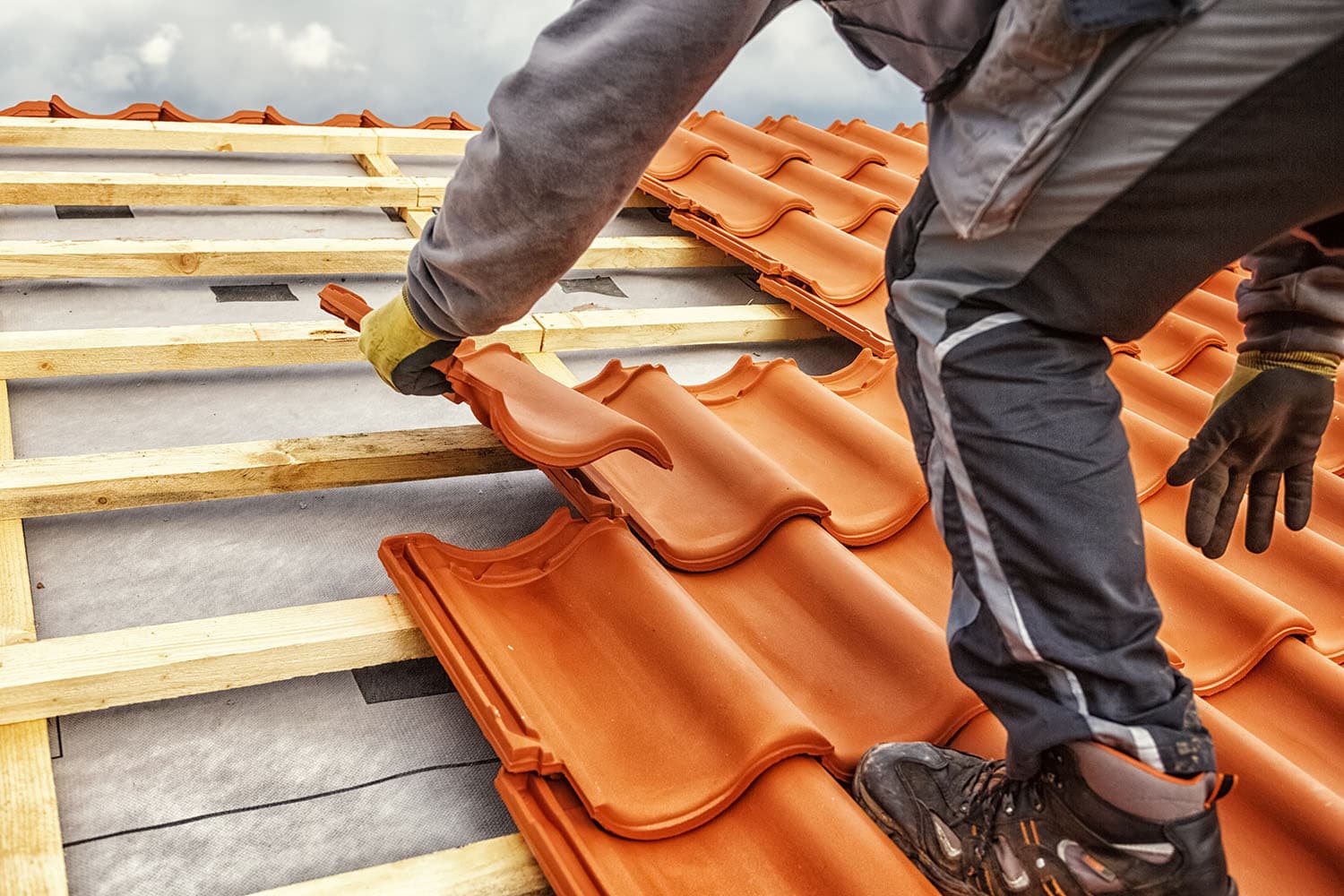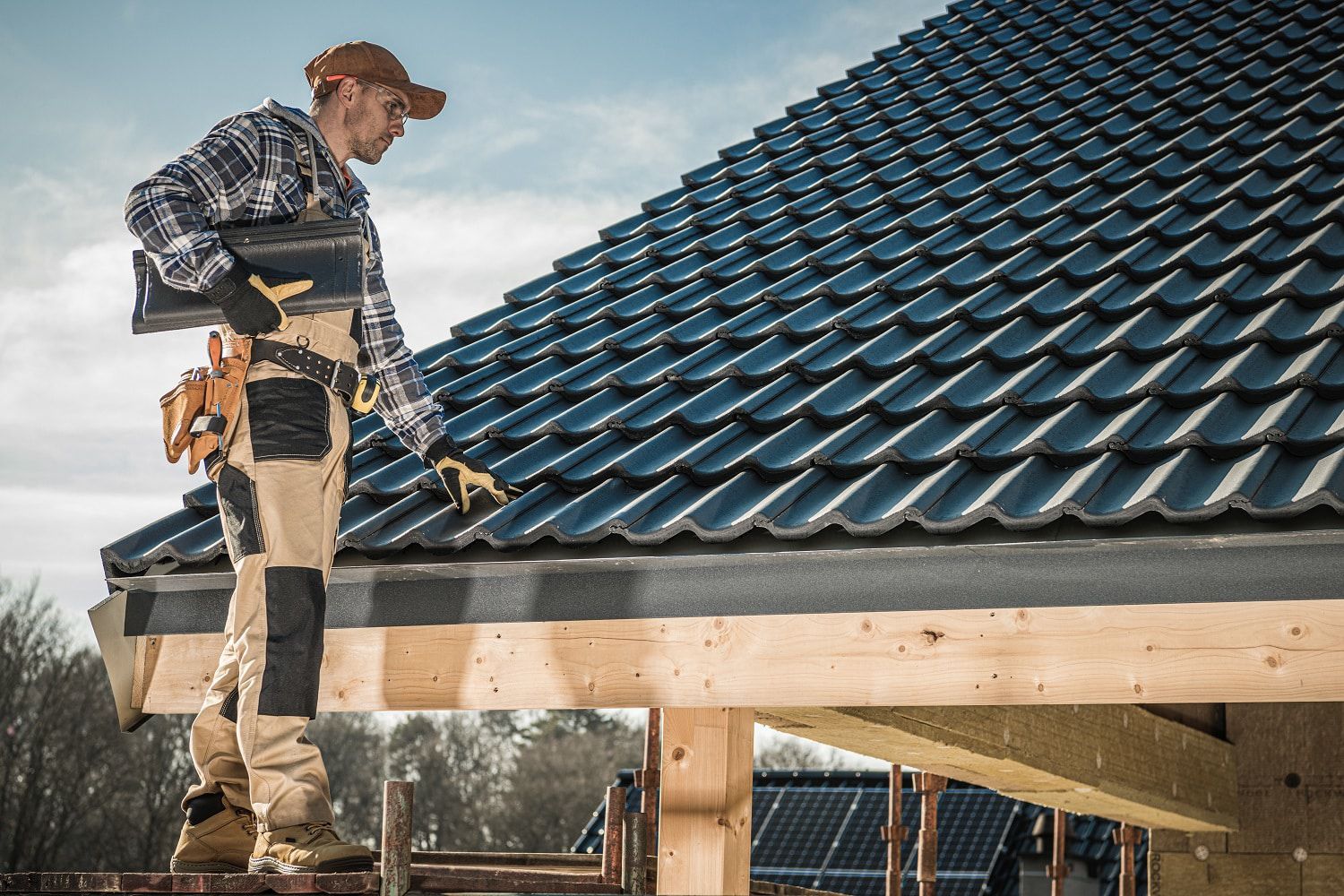Just How to Assess Different Roofing Alternatives for Your Building Requirements
Evaluating roof covering alternatives for your building needs an extensive strategy that considers numerous aspects such as the intended use of the structure, neighborhood climate problems, and product qualities - Toledo Roofer. It is important to weigh the advantages and disadvantages of different roofing types, from asphalt tiles to metal and clay floor tiles, while additionally factoring in first costs and lasting maintenance.
Analyzing Your Structure's Needs
To successfully assess roofing options, start by extensively evaluating your structure's requirements. Beginning by taking into consideration the building's intended use, as different structures may demand varying roof covering specs. Domestic roofing systems commonly prioritize appearances and insulation, while business buildings might concentrate on resilience and load-bearing capacity.
Next, review the local environment problems that will certainly influence roofing efficiency. Variables such as temperature level fluctuations, precipitation levels, and wind patterns can influence product selection and style. A roof covering system that masters a warm climate may not execute also in locations prone to heavy snowfall or severe warmth.
Furthermore, assess the structural honesty of your structure. Make sure that the existing framework can support the chosen roof products, especially if thinking about larger alternatives. It is additionally crucial to examine any kind of regional building ordinance or guidelines that might determine particular requirements for roof.

Comparing Roofing Products
When a detailed evaluation of your structure's requirements has been completed, the following action includes comparing different roofing products. Each material offers distinctive benefits and disadvantages, making it important to straighten your choice with your details requirements and situations.
Asphalt roof shingles are extensively acknowledged for their cost and convenience of installment, making them a preferred choice for domestic structures. On the various other hand, metal roofing, recognized for its durability and durability, can endure harsh weather problems however might include a higher first financial investment.
Clay and concrete floor tiles provide outstanding thermal insulation and visual charm, especially for Mediterranean-style architecture, yet they call for a more durable structural support because of their weight. Timber drinks offer a natural look and excellent insulation buildings but may require a lot more maintenance and are vulnerable to fire dangers.
Examining Price and Spending Plan
Analyzing your roof covering alternatives necessitates a careful assessment of expense and spending plan factors to consider. The total budget plan for a roof project makes up a number of aspects, consisting of product costs, labor expenditures, maintenance, and potential long-term savings. It is essential to develop a clear budget plan prior to exploring particular roofing materials, as this will direct the decision-making process and assist you stay clear of overspending.
Begin by acquiring quotes from several specialists to comprehend labor costs in your region. Ensure that these price quotes consist of all essential solutions, such as removal of the old roof, setup, and any kind of extra attributes, like insulation or ventilation renovations - Perrysburg Roofer. Next, assess the expense of various roof covering materials, taking into consideration both first installment prices and expected lifespan

Understanding Power Performance
Energy efficiency plays a crucial function in the selection of roof materials and systems, considerably impacting both power intake and general comfort within a structure. An appropriate roofing system can improve thermal efficiency, minimizing the demand for heating and cooling down systems, which in turn reduces energy costs and decreases environmental effect.
When examining roofing alternatives, Home Page think about products that show rather than soak up heat. Light or reflective roof covering products can substantially reduce roof surface area temperature levels, leading to reduced power usage throughout warm months. Furthermore, correct insulation and air flow are vital to enhance the power efficiency of the whole roofing system. Insulation avoids warmth transfer, while ventilation alleviates warm accumulation in the attic room space.
An additional essential aspect is the roof's long life and upkeep needs. Durable products that need less frequent substitute contribute to long-term power savings. Additionally, the power performance of a roof system can likewise be examined through its conformity with established sustainability scores such as power CELEBRITY or LEED.
Thinking About Aesthetic Allure
A roof covering's visual allure significantly affects the total appearance of a building, complementing its architectural design and boosting aesthetic allure. Roofing Contractor. When examining roof choices, it is important to consider just how the chosen product, shade, and style will integrate with the existing structure and community. A properly designed roofing can elevate also the easiest of buildings, transforming them right into visual centerpieces
Various roof products offer different aesthetic qualities. As an example, conventional shingles may evoke a traditional appeal, while steel roof covering can pass on a contemporary, smooth appearance. In addition, the color of the roofing material plays a vital role; lighter tones can make a structure appear more spacious, while darker tones may create a cozier setting.
In addition, architectural elements, such as dormers and eaves, can boost the roofing's aesthetic effect. It is recommended to talk to look at these guys expert developers or designers to guarantee the selected roofing alternative aligns with the general layout intent. Eventually, a roof covering needs to not only offer useful advantages however additionally add positively to the building's visual, reflecting the owner's taste and the personality of the surrounding setting.
Conclusion
